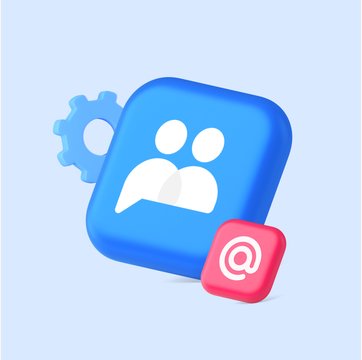Organize and Manage Emails in Google Groups

Table of contents
Google Groups offers a collaborative space for people with similar interests to have discussions.
But it can be a challenging task to manage Google Groups – especially if someone is a part of multiple groups, or belongs to a group with several members.
Why is that?
- Not all messages or emails within a group may be relevant or important to every member. Irrelevant messages can clutter the inbox.
- Tracking and managing conversations can become complicated, especially when discussions span different threads or cover a wide range of topics.
However, there are ways to keep your emails and conversations streamlined within Google Groups.
In this blog, you’ll learn how to efficiently manage emails in Google Groups, so that you don’t feel overwhelmed and not miss important discussions.
Table of Contents
- What is Google Groups?
- What is Google Group Email?
- How to Set Up Google Groups Email?
- Ways to Manage and Organize Emails in Google Groups
- Limitations of Google Groups Email
- 7 Best Google Groups Email Alternatives
- Google Groups Email FAQs
- Way Forward
What is Google Groups?
Google Groups is a free service provided by Google that facilitates both online discussions and email-based group communication. Users can create new groups tailored to specific interests or join existing ones. Within these groups, members can have threaded discussions, share files, and manage permissions.
It’s especially popular for collaborative projects, community discussions, and team-wide communication. The platform also offers features like customizable web interfaces for groups, searchable archives of past discussions, and integration with other Google services, such as Google Drive.
What is Google Group Email?
Google Group Email refers to the email address associated with a Google Group. When you create a group, you assign it a unique email address. Any email sent to this address will be distributed to all the group members, assuming the group settings allow for it. This makes it easy for members to communicate with the entire group through a single email address, whether that’s for discussions, announcements, or any other purpose.
For example, if you create a Google Group called “BookClub”, it might have an email address like “[email protected]”. Sending an email to this address would distribute the message to all members of the BookClub group.
How to Set Up Google Groups Email?
Here’s a step-by-step guide on how to set up a Google Group email:
1. Sign in to Google:
- Navigate to the Google Groups website at https://groups.google.com.
- Sign in using your Google account. If you don’t have one, you’ll need to create it.
2. Create a new group:
- Click on the “Create Group” button.
- Fill in your group’s name, email address, and description.
- The email address you choose will be the one you and others use to send messages to the entire group.
3. Set the basic permissions:
- Group type: You can choose various types like email lists, web forums, Q&A forums, etc. For a basic email list, select “Email list”.
- Who can join the group: Set according to your preference. “Anyone can ask” is common for open groups, while “Only invited users” is common for private groups.
- Who can post: Determine who you want to be able to send emails to the group. This can range from anyone on the internet to only members of the group.
- Who can view conversations: Set according to your privacy needs. If it’s a private group, “Only members” is a safe bet.
4. Configure advanced settings (optional):
After creating your group, you can fine-tune its settings:
- Click on “My Groups” > Choose your group > Click on “Manage Group”.
- Here, you can navigate through the left sidebar to adjust settings related to members, permissions, and more. Some notable settings include:
- Email options: Control how emails are delivered, including moderation settings.
- Permissions: Fine-tune who can join, post, or see the group’s content.
- Access: Control who can view or find the group.
5. Invite members:
- From the group’s main page, click on the “Invite Members” link.
- Enter the email addresses of the people you wish to invite. You can add a personal note if you like.
- Click “Send Invites”.
6. Start using the email:
Now that your group is set up, you can start using the email. Any email sent to the group’s email address will be forwarded to all members of the group (unless you have moderation turned on, in which case the email will need to be approved first).
7. Moderate (if needed):
If you’ve set your group to moderate messages, you’ll need to approve or reject messages before they’re sent to the group. You can do this via the “Manage Group” > “Moderate” section.
Recommended Reads:
Google Groups: The Ultimate Guide [2025]
The Ultimate Google Groups Guide for Businesses
Ways to Manage and Organize Emails in Google Groups
Google Groups can be a valuable tool for communication and collaboration, but like any tool, it’s most effective when organized and managed properly. Here are some tips and hacks for efficiently organizing and managing emails in Google Groups:
- Categorize with Labels: If you’re using Gmail to access your Google Groups, take advantage of the labelling system to categorize emails. Create labels specifically for your group, such as “Group – Important” or “Group – Tasks.”
- Mute Irrelevant Threads: If a thread isn’t relevant to you, use the ‘mute’ function in Gmail. This will prevent further emails from that thread from appearing in your shared inbox, but you can still search for them if needed.
- Set Email Preferences: Depending on your role in the group and the volume of emails, you might prefer to get emails in batches (digest mode) or one email at a time. Adjust this in the group settings to fit your needs.
- Integrate with Google Calendar: If the group frequently deals with events or deadlines, integrate the email notifications with Google Calendar. This ensures you don’t miss important dates.
- Use Collaborative Tools: Instead of lengthy back-and-forths in email threads, consider using collaborative tools like Google Docs for discussions that require a lot of input. Share the link in the group so everyone can contribute simultaneously.
- Archive Old Discussion: If certain discussions are no longer relevant but might be needed for reference, archive them. This keeps the main discussion area clean while retaining a record of past discussions.
- Stay Updated with Group Policies: Google often updates its features and policies. Regularly check the official documentation or relevant online forums to stay updated with the best practices for managing Google Groups. Learn what’s new in Google Groups
Limitations of Google Groups Email
There are certain limitations associated with Google Groups email, such as:
- Reply-All Concerns: When a message is sent to a Google Group, members might inadvertently reply to all recipients, which can lead to excess email clutter in everyone’s inboxes.
- No Individual Control: Group members cannot individually control the frequency or format of emails they receive from the group. This lack of customization might lead to members receiving emails that are not relevant to their interests.
- Moderation Challenges: In open groups, where anyone can send emails, there’s a risk of spam, off-topic messages, or inappropriate content being sent to the group. Moderation can be challenging, and unwanted content might still make its way into the group’s email discussions.
- Attachment Limitations: While Google Groups does support file attachments, there are size limitations for attachments. Large files might need to be hosted elsewhere and shared as links.
- Privacy Concerns: Depending on the group’s settings, members’ email addresses might be visible to other members, potentially leading to privacy concerns.
- Limited Analytics: While Google Groups does provide some basic statistics about group activity, it lacks the comprehensive analytics that many dedicated email management tools offer.
Manage Emails Better With Hiver
7 Best Google Groups Email Alternatives
| Tool | What is it? | How It’s Better Than Google Group Email? |
|---|---|---|
| Hiver | Email collaboration tool that works inside Gmail | Offers shared inboxes, automations, and efficient email collaboration features for teams. |
| Microsoft Teams | Unified communication and collaboration platform. | Integrates email with chat, video calls, and file sharing in one interface. |
| Asana | Work management tool with email integration. | Allows task tracking and collaboration within emails, reducing the need for separate platforms. |
| Zoho Mail | Email hosting service with collaboration features. | Offers integrated productivity tools, such as task management and calendars. |
| Front | Shared inbox platform for collaborating on emails. | Facilitates teamwork through shared email accounts and internal communication features. |
| Basecamp | Project management and team communication tool. | Combines task management, scheduling, and email-like messaging for efficient collaboration. |
| Trello | Visual project management tool with email integration. | Enables organizing tasks on boards and integrating email-based tasks easily. |
| Slack | Team messaging and collaboration platform. | Provides real-time messaging, file sharing, and integrations for streamlined communication. |
Google Groups Email FAQs
Here are some frequently asked questions (FAQs):
Q1. How do I send an email to a Google Group?
To send an email to a Google Group, you simply need to compose an email and send it to the group’s email address. The email will be distributed to all the members of the group.
Q2. How do I join a Google Group via email?
To join a Google Group via email, you can send an email to the group’s email address and follow any instructions provided in the group’s welcome message.
Q3. How do I leave a Google Group via email?
To leave a Google Group via email, you can send an email to the group’s email address with a specific command to unsubscribe. The exact command may vary depending on the group’s settings.
Q4. Can I control the email notifications I receive from a Google Group?
Yes, you can control the email notifications you receive from a Google Group. You can adjust your notification settings to receive emails immediately, once a day, or no emails at all.
Q5. How do I change my Google Group email preferences?
You can change your Google Group email preferences by visiting the Google Groups website, signing in with your Google account, and accessing the group’s settings. From there, you can adjust your email delivery preferences.
Q6. What’s the difference between “All Mail” and “New Topics” in Google Groups email delivery options? “
“All Mail” delivers every email sent to the group to your inbox, while “New Topics” sends you only the first email of a new topic, and the subsequent replies are grouped into threads. “New Topics” helps reduce email clutter.
Q7. Can I attach files to emails sent to a Google Group?
Yes, you can attach files to emails sent to a Google Group, just like you would with any other email. However, keep in mind that large attachments might be subject to size restrictions set by the group or your email provider.
Q8. Can I search for past emails sent to a Google Group?
Yes, you can search for past emails sent to a Google Group. The Google Groups interface provides a search feature that allows you to find specific emails or topics within the group.
Way Forward
Google Groups is a great way to collaborate and streamline discussions. However, it can be difficult to manage emails in Google Groups, especially if you are a member of multiple groups.
Hiver is a great way to take your Google Groups email management to the next level. If you are looking for a way to stay organized and productive, I highly recommend giving Hiver a try.
Hiver adds a number of features to Google Groups, including:
- A powerful search engine that makes it easy to find specific emails.
- A threaded conversation view that makes it easy to follow long conversations.
- A task management system that helps you track progress on group projects.
- A document collaboration system that makes it easy to share and edit documents with other group members.

































